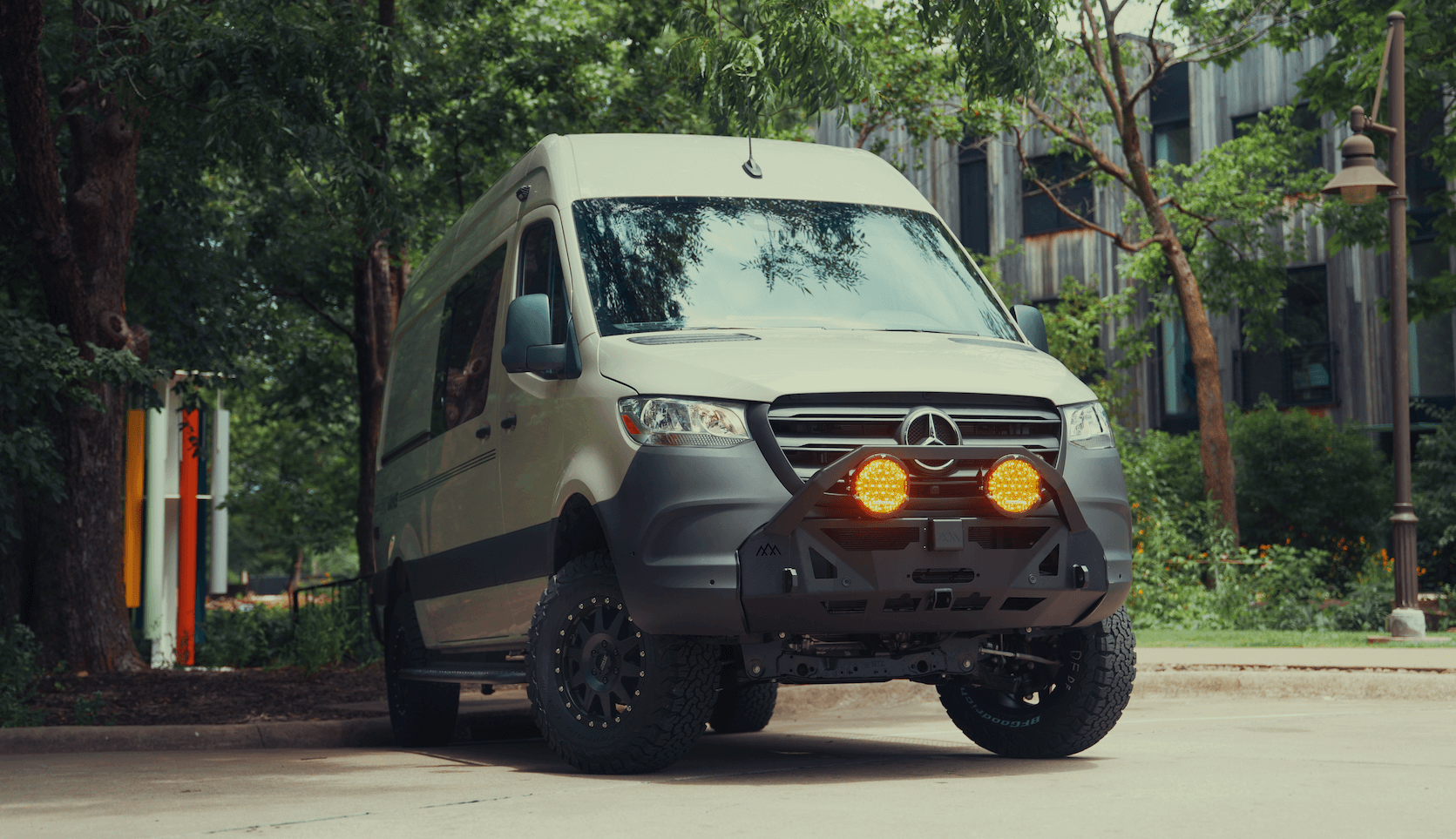Recreational Vans

Washboard corrugations act like a repeating speed bump series. If your wheel speed matches the spacing, the suspension starts to resonate, multiplying vibration through the chassis and interior.
When tire contact patches skip from crest to crest, damping cannot recover between hits. That sets up a feedback loop that shakes body panels, mounts, and anything unsecured in the cabin.
Tire construction and pressure shape how much impact enters the vehicle. Stiff sidewalls transmit more force while overly soft tires overheat and deform. The right pressure for load and terrain is key.
Weight that is rear biased or high centered increases oscillation. Energy travels through mounts, brackets, and furniture, so weak links and loose hardware become noise makers.
Start with technique. A careful approach reduces input energy and immediately lowers rattle volume.
Reducing rattles on washboard roads often comes down to damping and isolation. Focus on components that control frequency and prevent hard contact.
Quality dampers with consistent heat management reduce wheel hop and chassis shake. Monotube shocks with appropriate valving keep the tire following the terrain rather than skipping across the crests. On heavier vans, matched springs and shocks prevent topping or bottoming that creates sharp impacts. If your rig allows adjustability, a click or two more rebound can help the tire stay planted on corrugations, while compression should be set to maintain control without harshness.
Old rubber transmits chatter once it hardens or cracks. Replace worn control arm bushings, sway bar bushings, and body mounts. Use threadlocker where appropriate and follow a torque map for the chassis, subframe attachments, seat bases, racks, and skid plates. Retorque after your first long dirt trip and add periodic checks to your maintenance routine.
Cabinetry rattles when latches lack preload or faces contact rigid stops. Fit positive latches, add thin felt at strike points, and use foam tape on panel interfaces that buzz. For drawers, add soft close slides or a secondary catch to hold position. Consider contact point isolation on fridge mounts and bed platforms. Where panels drum, constrained layer damping tiles stop resonance, followed by closed cell foam to reduce airborne noise. Finish with a barrier like mass loaded vinyl in floor and step wells to lower drone.
Think of the road as a metronome and your rig as the instrument. Keep inputs smooth, scan for lines with shallower ripples, and let the suspension work. If the vehicle starts to buzz or skip, ease off and adjust speed to break the resonance. Short breaks on long sections keep shocks cool and consistent.
Once you have the fundamentals dialed, a professional upfit can push the ride from acceptable to truly composed. Our team designs suspension packages around real world payload, tunes interior attachment points to silence friction contact, and builds storage that locks quietly in place. We focus on details that matter on corrugations, from body mount upgrades to strategic sound control that does not add unnecessary weight.
If you are exploring the next step in a capable, quiet travel rig, learn more about our recreational vans, consider a fully planned custom van build, or see platforms that finance on our mainstream vans page.
If your goal is fewer rattles and more miles, we can help you choose the right suspension, secure your interior, and hand off a rig that stays quiet when the road turns to corrugations.
At OZK Customs in Northwest Arkansas, we build adventure ready vehicles and deliver a thorough sendoff so you leave confident and comfortable.
Contact us to start your plan today.
Ready to quiet your rig for the long haul? Tell us how you travel and we will design a custom build or targeted upfit that tames washboard roads, cuts cabin noise, and protects your gear. Submit the form to start your OZK planning call.
ADDRESS:
6159 E Huntsville Rd, Fayetteville, AR 72701
PHONE:
(479) 326-9200
EMAIL:
info@ozkvans.com